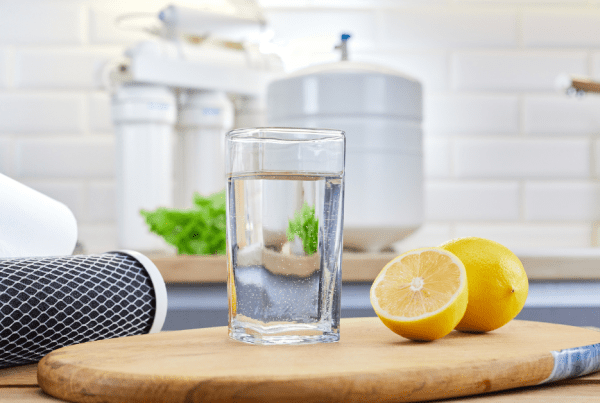You May Have Heard of Reverse Osmosis, but What Is It and What Does It Actually Do?
This article will answer some questions about the Reverse Osmosis equipment and process, and whether or not you need one.
What is Reverse Osmosis?
Reverse Osmosis, commonly referred to as RO, is a process where you demineralize or deionize water by pushing it under pressure through a semi-permeable Reverse Osmosis Membrane. In 1950, the University of California at Los Angeles first investigated the desalination of seawater using semipermeable membranes. Researchers from both University of California at Los Angeles and the University of Florida first successfully produced fresh water from seawater in the mid-1950s. Reverse Osmosis is used by the military to desalinate water and provide potable water from nearly any water source, by certain local municipal water treatment facilities, and even in food production, such as syrup and beer manufacturers.

How Does Reverse Osmosis Work?
Reverse Osmosis works by reversing the principle of osmosis, the natural tendency of water with dissolved salts to flow through a membrane from lower to higher salt concentration. This process is found throughout nature. Plants use it to absorb water and nutrients from the soil. In humans and other animals, kidneys use osmosis to absorb water from the blood. In your home, RO works by forcing water from your home’s supply (well or city water) through the Reverse Osmosis membrane. This membrane contains thousands of tiny holes, just large enough to allow water molecules to pass through. Anything bigger than a water molecule is trapped and cannot fit through the membrane.
What Contaminants Will Reverse Osmosis Remove From Water?
Reverse Osmosis is a filtration system designed to remove dissolved solids, organic and inorganic forms, that a water softener cannot. RO removes metals like arsenic, aluminum, copper, lead, chromium, and many others. It also removes inorganic forms such as nitrates, phosphates, chlorides, sulfates, and more.
What Are the Benefits of Drinking Reverse Osmosis Water?
Personal Health — Water makes up about 60% of your body’s weight—your body depends on water to survive. Every cell, tissue, and organ in your body needs water to work properly. Lack of water can lead to dehydration. Water gets rid of wastes, keeps your temperature normal, lubricates and cushions joints, and protects sensitive tissues. For your body to function correctly, you must replenish its water supply by consuming beverages and foods that contain water. Well and city water can contain contaminants such as, chlorine arsenic, aluminum, copper, lead, chromium, and many others. Reverse Osmosis filters out 95-99% of these harmful metals and chemicals.
Environmentally Responsible — Single-use plastic bottles are a leading cause of environmental pollution. About 70% of plastic water bottles bought in the United States end up in landfills or in the oceans, harming the ecosystem and poisoning animals. Reverse Osmosis allows you to have better-than-bottled water quality in your reusable bottle.
Economical — Bottled water is expensive. It can cost between 400 to 2,000 times more than tap water, four times more than a gallon of milk, and three times more than a gallon of gasoline. If you buy bottled water in bulk, it’s about $.19 per bottle. If you drink the recommended amount every day, that adds up to over $485 per person, every year! A Reverse Osmosis system can be installed by C and J Water for under $600.
Convenient — A reverse osmosis drinking water system takes up minimal space in your home and gives you contaminate-free water straight from your tap and into your refillable water bottle. C and J Water can even hook the Reverse Osmosis up to your refrigerator and ice maker.
Where Should I Use Reverse Osmosis Water
Drinking Water — Instead of drinking the water that comes straight from your tap, and the contaminate that is in it, drinking RO water has a better taste and quality.
Cooking — While boiling water gets rid of some harmful bacteria, it doesn’t eliminate everything. The water that comes from your Reverse Osmosis faucet is clean and ready to cook with.
Pets — Our pets are usually more than just companions—they are like family. Just as you want your children to drink the best quality water, we want our pets to be healthy too. RO provides a healthy option for those furry friends in our family
Coffee — Whether you are using a standard drip maker, a French press, a pour-over, or a Keurig pod system, RO water is the best choice. RO water is free of dissolved solids and contaminants, so you won’t need to descale your machine or deal with stains in carafes or mugs.
Where Can I Buy a Reverse Osmosis Drinking Water System?
C and J Water have multiple water treatment solutions that ensure clean and sanitary drinking water— straight from your tap. Whether you have city or well water, we can provide your family with quality, contaminate-free water.




